| Vaishno Devi Tour | ||||||
Katra Town, lying in the foot of Trikuta Mountains, 48 kms. from Jammu, serves as the base camp for visiting the famous shrine of Shri Mata Vaishno Devi, which is approachable on foot along a 13 kms long well laid footpath. Every year, more than 4.5 million pilgrims pass through Katra on their way to the holy shrine.
The cave shrine of Mata Vasihnodeviji or Trikuta Bhagwati (alt: 5,200 ft.) has been a beacon of faith and fulfilment to millions of devotees from all over the world. The pilgrimage to the Shrine holds great significance for the pilgrims.
The Legend of Mata Vaishnodeviji.
Everyday of the year throngs of people surge up the steep pathways that cut across the Trikuta hillsides for mile after mile. This show of faith is finely interwoven with the cultural strands of the Indian subcontinent, and these pathways have been trod on for many centuries now. Popular belief holds that anybody who walks the Himalayan trail to the goddesses's abode to ask for a boon rarely goes back disappointed. Whatever be it, a new enterprise or a forthcoming examination, marriage or birth, the devout look up to the Mata For blessings and guidance. There are many who journey year after year to pay obeisance regardless of their faith or belief, creed or class, caste or religion.
The Yatra to the holy shrine is as fascinating as the legend associated with it. It goes that thousands of years ago, a comely maiden called "Vaishnavi" have been created by the three lords attained human form and was a devotee of Lord Vishnu. Having taken a vow of celibacy, she spent almost all her life in meditation and prayers. In time she attained enormous spiritual powers and is believed to have extracted an assurance from Lord Rama that he will marry her in Kali-Yug if she persisted in her spiritual quest.
This is why she is also known as Adh Kanwari or the "eternal virgin".
Mata Vaishno Devi established an ashram in the foothills of the Trikuta Mountain and began to meditate. As predicted by Lord Rama, her glory started spreading and people began to flock to her ashram to seek her blessings. As time passed, a Tantrik called Gorakh Nath (Demo God), who had a vision of the episode between Lord Rama and Mata Vaishno Devi, became curious and wanted to know more about her. Accordingly, he sent his most able disciple `Bhairon Nath' to find out. Bhairon Nath started observing her secretly and realized that despite being a `Sadhvi', she always carried a bow and arrows and was always surrounded by langoor (apes) and a ferocious looking lion. Bhairon, the demon God took a fancy to her. But the Mata spurned his advances and fled to the Himalayas to continue her spiritual quest.
On the way the goddess felt thirsty at Banganga and shot an arrow into the earth from where water gushed out. Charan Paduka, which is marked by the imprints of her feet, is the place where she rested.
The Goddess then meditated in the cave at Adh Kanwari. It took Bhairon nine months to locate her, which is why the cave is known as Garbh Joon.
When the demon found her, Mata Vaishno Devi blasted an opening at the other end of the cave with her trident and fled to the Holy cave at Darbar (temple).
However, Bhairon was persistent and followed her there to harass her. Then goddess became very angry and assuming the form of Mata Kali, beheaded Bhairon outside the cave with the aid of the flying disc gifted to her by Lord Krishna
The severed head of Bhairon fell at a distant hilltop. In his dying moments, Bhairon begged and received divine forgiveness from the goddess. Today, it is believed that the Yatra is not complete unless the pilgrim has been to Bhairon ka Mandir (2.6 km from the main sanctum) as well, after the darshan of Shri Mata Vaishno Devi.
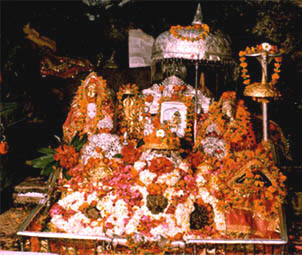
The goddess herself took up permanent abode in a cave in the Trikuta Mountains by metamorphosing herself in to three pindis (Rock). This holy shrine of Mata Vaishno Devi is unique as it contains the holiest of holy Pindis manifesting the Mata in her three forms - Maha Kali, Maha Lakshmi and Maha Saraswati - each form representing a particular attribute. Maha Kali represents Tamas Guna, Tamas meaning darkness. In her manifestation of Kali the omnipotent, absolute and all pervasive, she is said to be beyond fear and finite existence and is therefore able to protect her devotees against fear and to give them limitless peace. Maha Lakshmi represents Rajas Guna, Rajas meaning prosperity. In this manifestation, the goddess blesses her devotees with wealth and prosperity for living a better life. Maha Saraswati represents Sattav Guna, Sattav meaning wisdom and knowledge. This manifestation enables her devotees to distinguish between good and bad and helps them to adopt the right path in life. The combination of these three attributes in a single Shakti is a unique combination, which is what makes it, revered all over the world.
What to remember
Clothing
Light woollens are required at night even during summer. During the remaining parts of the year heavy woollens are require.
How to reach
Jammu, 48 kms from Katra, is the nearest airport, railhead and inter-state bus terminus. Buses leave for Katra at 10 minute intervals between 5:30 a.m and 8:30 p.m. During peak season, additional buses are pressed into service.
Taxis ar
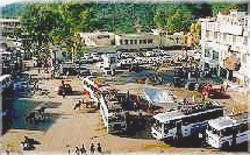
Helicopter Service
Pawan Hans operates two flights daily from Jammu and 5 flights from Katra to Shrine.
Capacity: 6 persons per flight. (The service stands discontinued for the time being)
The distance from Katra town to Vaishno Devi (Durbar) is 13 kms, which has to be traversed by pony, ‘dandi’ or on foot. ‘Pithus’ (coolies) are also available.
The Mata Vaishno Devi Shrine Board (SMV Shrine Board) runs a large number of cafeterias and viewing points along the trail between Katra and the shrine where snacks, coffee and cold drinks are provided to the yatris on a no-profit-no-loss basis. The Shrine Board also runs ‘bhojanalyas’ at Katra, Adhkawari, Sanji Chhat and at the Bhawan / shrine for providing hygienically prepared food to the yatris on a no-profit-no-loss basis.
Upon reaching the Bhawan, a group number is allotted to the pilgrims at the slip (‘parchi’) counter against the yatra slip issued at Katra. The yatri is required to stand in queue at Gate Number 2 till the announcement of the group’s number is made to proceed to the sanctum sanctorum. While inside the cave, one should concentrate on the darshan of the mother goddess in her three-pindi forms – Maha Kali, Maha Lakshmi or Maha Vaishnavi and Maha Saraswati. The holy water coming from the feet of the Mata can be collected on the way back.
|
Chemrey Gompa Location: Near Hemis Gompa, Souteast Of Leh, Ladakh Region, J&K Founded In: 1664 Significance: A Memorial To King Sengge Namgyal Clinging like a swallow's nest to the sides of a shay conical hill, the magnificent Gompa of Chemrey sees very few visitors because of its location - tucked up the side valley that runs from Karu, below Hemis, to the Chang-la pass into Pangong. If one isn't having one's own vehicle, then be prepared to do some walking to get there. It takes around fifty minutes to follow the dirt track down to the river and up to the monastery after the Leh -Thak Thok bus drops one off beside the main road. Founded in 1664 as a memorial to King Sengge Namgyal, the monastery is staffed by a dwindling community of around twenty Drugpa monks and their young novices. Its set of ancient Tibetan texts whose title pages are illuminated with opulent gold and silver calligraphy. Upstairs in the revamped Guru-La-Khang, reached via several flights of...
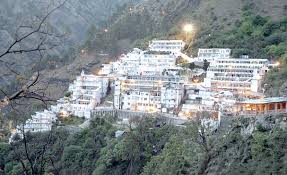
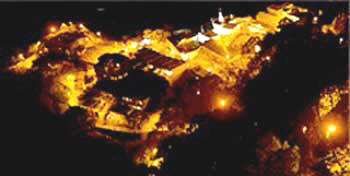
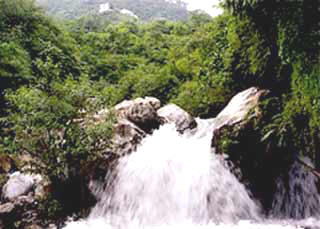
Comments
Post a Comment